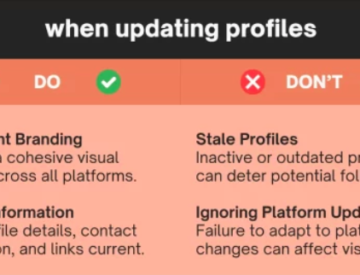Back in 2009, the folks at Tourism Queensland in Australia came up with was is still today considered one of the best contest ever held on the web, social media or anywhere else, for that matter: by submitting a video for why you should be chosen, this gave you automatic entry in a contest where the winner could work a complete year, all expenses paid, as caretaker for a remote, paradise-like island off the coast of Queensland, on the Grand Barrier Reef.
The outcome? More than 14,000 video applications across key international markets, including the UK, USA, Europe, Japan and China, among others. Moreover, while the campaign is said to have cost US$1.2M, it garnered an estimated US$100M in international press coverage, with stories published in Time magazine, BBC documentaries, CNN stories and a lot of buzz in various travel blogs, forums and social networks.
TOURISM AUSTRALIA GETS SOCIAL
Fast-forward four years later, and one can quickly see how fast things have evolved in the social media sphere, in particular within the travel marketing vertical. There are close to 200 airlines active on Twitter, almost 100% of hotel brands have a Facebook page while an increasing proportion of destinations are investing time and efforts on Pinterest and Instagram, two tools that did not even exist back in 2009. So when Tourism Australia recently announced the comeback of their famous contest, some wondered: why bring this back?
For one thing, this time around there isn’t just one job for grabs, but six. And more importantly, this contest is the fuel and content for a dynamic and complex online brand structure that Tourism Australia has been weaving. In essence, the folks at Tourism Australia understand that, as great and savvy as their marketing staff can be with social media, the real power to propel the destination’s brand resides with travelers, whether domestic or foreign, and citizens sharing experiences about everyday life in the land of Oz.
Their vision is captured in this presentation, where they explain how Australia will become the most talked about travel destination in the world. Lofty ambition? Sure, and they may just pull it off, having already the biggest fan base on Facebook (8 million), Google+ and Instagram.
[slideshare id=16545786&doc=worldsbiggestsocialmediateam-slidesharefinal-130215050528-phpapp01]
LETTING GO OF THE BRAND
In order for a travel destination to successfully achieve this vision, it must first come to accept that it no longer controls the brand – did it ever, in fact? Thus, it’s not so much “letting go” of the brand but rather acting as an MC, or the conductor of a symphonic orchestra, where the destination plays the guide, steering travelers towards online resources and discussion forums where information is readily accessible and credible, partly because of social proof and peer recognition.
This is also the direction taken by the folks at Tourism Montreal, in Canada. Back in 2009, they realized how important online marketing and communications had become, so they shifted almost all of their marketing dollars towards online initiatives, including a critically acclaimed experiential website, a content-rich blog and a dynamic approach on various social networks.
Yet, in early 2012 they came to a similar realization as Tourism Australia: they needed the help of others to cut through the ever-increasing noise and really propel the Montreal brand to levels beyond the reach of media buy alone.
Segmentation into 3 groups
They are presently in the midst of a series of fundamental, organizational changes that will be deployed to three key groups.
- First, ongoing training is provided to all 80 employees, partly to enable them to manage a dynamic presence on various social networks, thus having more brand ambassadors active on various platforms. But also to integrate social media as part of the organizational culture, generating leads, answering customer queries or participating in community discussions.
- Second, a strategy is being put in place to ensure Tourism Montreal’s 800 members (hotels, restaurants, attractions, etc.) have the tools in place to better understand and manage their presence on key social media. Training will be given and tools provided, such as a practical guide with do’s and dont’s, along with strategic considerations.
- Last but not least, the vision by 2014 is to have local citizens partake in the social discussions, including domestic and foreign travelers alike.
DON’T JUST DO SOCIAL. BE SOCIAL.
As Jay Baer famously said it, “companies that get it are those who are social, not those who do social” and this is the level where travel destinations and tourism suppliers will need to take it next. So when Tourism Australia executes its social vision, it goes so far as asking telecoms, hotel chains and other travel suppliers to work hand-in-hand in order to provide free wifi across the country.
Why? To save travellers money while at destination? Perhaps, but the true reason is to enable travellers to use their mobile devices and access their favorite social media in order to share their experiences! As Tourism Australia’s general manager, Nick Baker, told the Sydney Morning Herald “Holidays are all about living in the moment”.
Other destinations have begun offering content-rich initiatives, while some even handed over their twitter account to local folks, such as @Sweden and @ThisIsVT. Who will be next to follow and truly embrace social, putting the brand’s discussion and perception in the hands and voices of the traveller and customer?










Leave a Reply